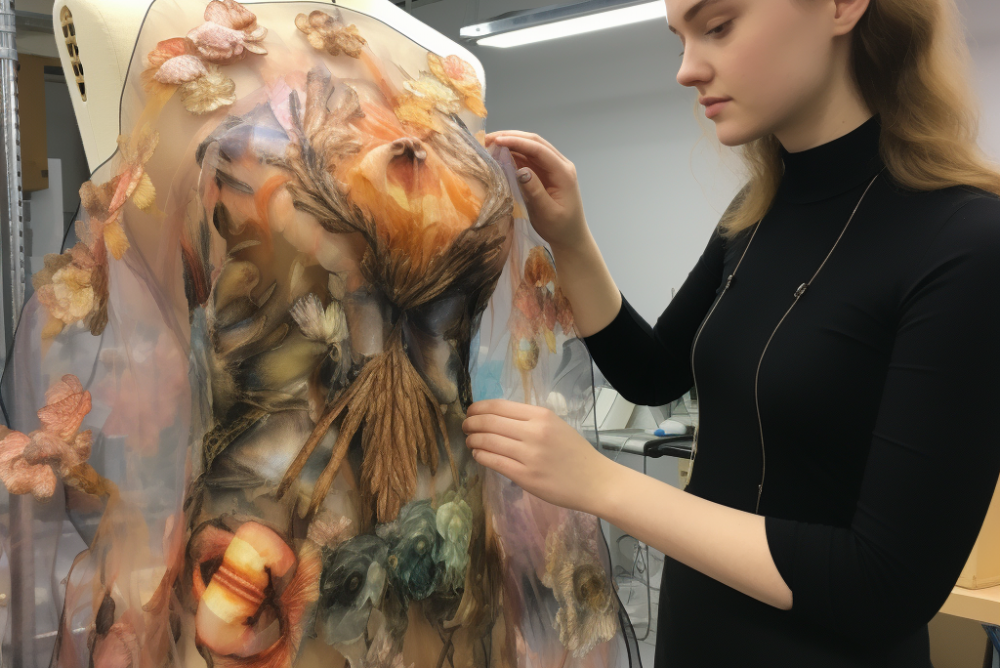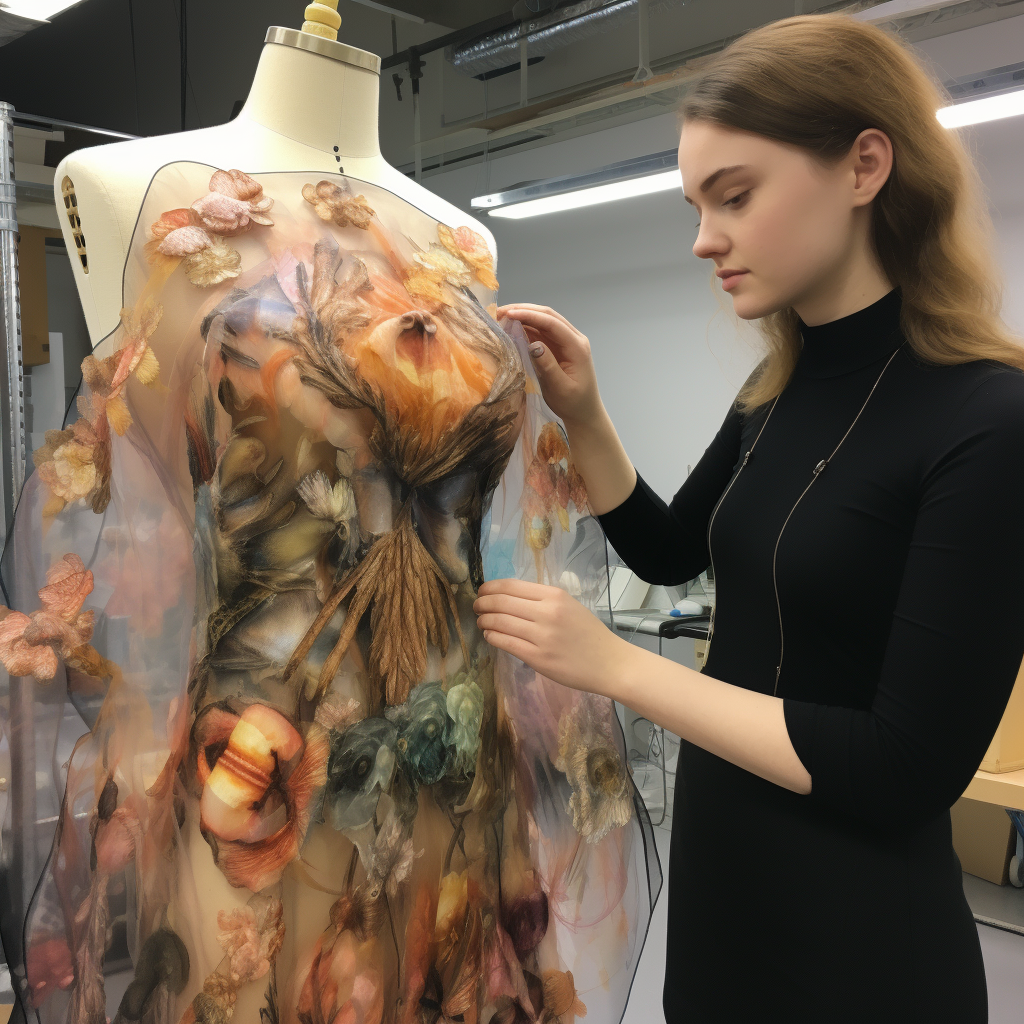The Unsung Heroes: IEs in Garment Sampling


In the intricate and dynamic world of the garment industry, precision, efficiency, and adaptability are paramount. While fashion trends rapidly evolve, the backbone of garment creation - its processes and departments - remains consistent in its pursuit of excellence. At the heart of this ecosystem lies the Sampling Department, a pivotal division where new designs come to life for the first time. Ensuring the seamless functioning of this department is the responsibility of an unsung hero: the Industrial Engineer (IE).
This article delves into the fundamental role and responsibilities of an IE in the Sampling Department of the garment industry. Drawing from real-world data, industry benchmarks, and expert insights, we aim to paint a comprehensive picture of this vital position. From process optimization to cross-departmental collaboration, the IE plays a central part in streamlining operations and maintaining the high standards expected in today's garment sector.
Understanding the Garment Industry: A Brief Overview
The global garment industry is a multi-billion dollar sector, accounting for approximately 2% of the world's Gross Domestic Product (GDP). Over the past few decades, the fashion industry has seen a transformative shift, from local tailors crafting custom garments to large-scale mass production catering to a global audience. The contemporary fashion market is characterized by its fast-paced nature, where "fast fashion" trends emerge almost overnight and demand quick adaptation.
Garments, be it everyday wear or high fashion, begin their life as an idea or design. Before they hit the production floor and eventually find their way into retail spaces, these designs undergo a crucial step: sampling. The Sampling Department acts as a bridge, translating a designer's vision into a tangible, wearable piece. This department is responsible for creating prototypes, refining designs, and ensuring that the finished product will meet quality standards and be feasible for mass production.
What is an Industrial Engineer (IE)?
Industrial Engineers (IEs) are trained professionals who specialize in optimizing complex processes and systems. Their background in both engineering and management equips them to streamline operations, eliminate wastefulness, and ensure maximum efficiency. Their scope isn't limited to the garment industry; IEs can be found in sectors ranging from manufacturing and healthcare to logistics and finance.
In the context of the garment industry, IEs play an indispensable role. Their expertise helps in refining production processes, minimizing costs, and ensuring timely delivery of products, all while maintaining or enhancing product quality.
The Vital Role of an IE in the Sampling Department
Sample Development:
The very first prototype of a garment, or the "sample," is a critical component in the design-to-retail journey. An IE ensures this development process is optimized. They work alongside designers, understanding the intricacies of the design, and suggesting feasible methods for transforming sketches into real garments.
Efficiency and Cost-Effectiveness:
Sampling can be both time-consuming and costly. An IE evaluates the sampling process, identifying bottlenecks and potential areas for cost reduction. By implementing best practices, they ensure that the department works within budgetary constraints without compromising on the quality of the sample.
Process Standardization and Improvement:
Consistency is key in sampling. Two samples of the same design should be identical. IEs develop standardized operating procedures, ensuring uniformity across samples. They also identify areas for continuous improvement, introducing innovative methods or technologies to enhance the sampling process.

Responsibilities of an IE in the Sampling Department
The Sampling Department stands as a hub of creativity and precision in the garment industry. Here, an Industrial Engineer (IE) takes on multifaceted roles, aligning the technicalities of engineering with the artistry of fashion. Below, we break down the essential responsibilities of an IE in this department:
Time and Motion Study:
The garment industry often operates on tight schedules. An IE conducts time studies to determine how long each sampling task takes, from cutting fabric to stitching components.
By analyzing these time studies, IEs can set standard operating times, ensuring timely sample production and aiding in predicting lead times for mass production.
Sample Evaluation and Feedback:
Once a sample is produced, it's crucial to assess its quality, fit, and adherence to the design. IEs work closely with designers and quality control teams in this evaluation process.
They provide feedback, pinpointing areas of improvement. This iterative feedback loop ensures the final sample is both high-quality and production-ready.
Collaboration and Coordination:
An IE doesn't operate in isolation. They're the linchpin coordinating between designers, production teams, and suppliers.
By fostering effective communication, IEs ensure that the materials, machinery, and manpower are in sync, resulting in a seamless sampling process.
Training and Skill Development:
The garment industry is ever-evolving, with new technologies and techniques emerging regularly. IEs take the lead in training sessions, ensuring the sampling team is up-to-date with the latest industry best practices.
Additionally, they mentor junior team members, passing on their expertise and fostering a culture of continuous learning.
The Growing Importance of IEs in the Modern Garment Industry
The garment industry, a reflection of our societal trends and preferences, is in a state of constant flux. With the rise of e-commerce, sustainable fashion, and rapid fashion cycles, the pressure on the industry to deliver has never been higher. Within this landscape, the role of Industrial Engineers (IEs) is intensifying. Here’s why:
Fast Fashion & Quick Turnarounds:
With brands releasing new collections almost every month, the need for quick sample production and efficient scaling to mass production is paramount. IEs ensure that the sampling process is optimized for these quick turnarounds, enabling brands to stay ahead in the fast fashion race.
Sustainability & Ethical Manufacturing:
Modern consumers are more conscious than ever about the origins of their clothing. There's a rising demand for sustainable and ethically-produced garments.
IEs play a significant role in this movement by identifying wasteful processes, optimizing resource utilization, and ensuring that manufacturing practices are both eco-friendly and ethical.
Technological Integration:
The integration of technology, from AI-driven design tools to automated sewing machines, is reshaping the garment industry.
IEs are at the forefront of this revolution. They assess the viability of new technologies in the sampling process, ensuring a harmonious blend of traditional craftsmanship and modern tech.
Global Supply Chains:
With globalization, the garment industry’s supply chains have become more intricate. Raw materials might be sourced from one continent, processed in another, and sold in a third.
IEs are instrumental in managing these complex supply chains, ensuring that the sampling department gets the materials it needs on time, every time.
Challenges Faced by IEs in the Sampling Department
As pivotal as Industrial Engineers (IEs) are in the Sampling Department of the garment industry, their role isn't without its set of challenges. The fast-paced and ever-evolving nature of the industry, coupled with the inherent complexities of blending artistry with engineering, presents unique hurdles. Let's delve into some of the primary challenges faced by IEs:
Balancing Creativity with Feasibility:
Designers often envision garments that push the boundaries of creativity. While these designs are artistically commendable, they might pose challenges in terms of manufacturing feasibility.
IEs often find themselves in the delicate position of mediating between the designer's vision and the practicalities of production.
Keeping Up with Technological Advancements:
The garment industry is rapidly integrating new technologies. Whether it's AI-driven design tools or state-of-the-art machinery, there's always something new on the horizon.
For IEs, staying updated with these advancements, and more importantly, determining their applicability in the sampling process can be daunting.
Managing Tight Deadlines:
The "fast" in fast fashion isn't just a moniker; it's a relentless pace that the industry maintains. Sampling departments often work on tight schedules, especially when catering to seasonal collections or sudden market trends.
IEs need to ensure efficiency without compromising quality, a challenging balancing act under stringent deadlines.
Navigating Global Supply Chain Complexities:
As mentioned earlier, the garment industry's supply chains are vast and intricate. IEs must ensure timely availability of materials for the sampling department, sometimes coordinating with suppliers from different parts of the world with varying time zones and cultural nuances.
Training and Skill Upgradation:
An IE's responsibility isn't limited to process optimization. They also play a crucial role in training and skill development within the sampling department.
Keeping the team updated with the latest techniques, while also ensuring that traditional craftsmanship isn't lost, is a continuous challenge.
Conclusion
The world of fashion, with its glitz and glamour, often overshadows the meticulous processes and dedicated professionals that operate behind the scenes. The garment industry, one of the world's most significant economic sectors, thrives on the seamless integration of design, production, and distribution. At the confluence of these intricate processes lies the Sampling Department, the birthplace of every garment.
Industrial Engineers (IEs) in this department serve as the vital link, merging the imaginative world of fashion design with the grounded realities of production. Their expertise ensures that designs are not just aesthetically pleasing, but also feasible for mass production, cost-effective, and timely delivered.
As we've explored, the responsibilities of IEs are multifaceted, ranging from process optimization and technology integration to training and global coordination. They face challenges that test both their engineering acumen and their adaptability. Yet, time and again, IEs prove indispensable, driving innovation and ensuring that the garment industry remains on its upward trajectory.
In a nutshell, while designers might be the heart of the fashion industry, bringing visions to life, Industrial Engineers are its pulse, ensuring that the industry's heartbeat remains strong, rhythmic, and unyielding to challenges. As fashion continues to evolve, the role of the IE, with its blend of artistry and precision, will remain pivotal, guiding the industry towards newer horizons of excellence.





-500x500.jpg)
-500x500.jpg)
-500x500.jpg)
-500x500.jpg)
-500x500.jpg)